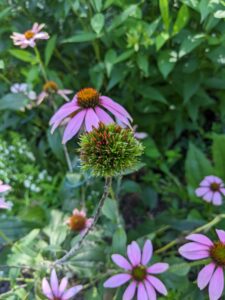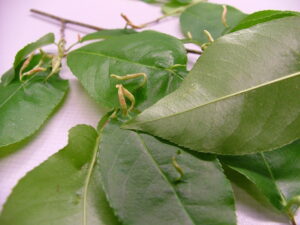Pest Alert – Coneflower Diseases
go.ncsu.edu/readext?876237
en Español / em Português
El inglés es el idioma de control de esta página. En la medida en que haya algún conflicto entre la traducción al inglés y la traducción, el inglés prevalece.
Al hacer clic en el enlace de traducción se activa un servicio de traducción gratuito para convertir la página al español. Al igual que con cualquier traducción por Internet, la conversión no es sensible al contexto y puede que no traduzca el texto en su significado original. NC State Extension no garantiza la exactitud del texto traducido. Por favor, tenga en cuenta que algunas aplicaciones y/o servicios pueden no funcionar como se espera cuando se traducen.
Português
Inglês é o idioma de controle desta página. Na medida que haja algum conflito entre o texto original em Inglês e a tradução, o Inglês prevalece.
Ao clicar no link de tradução, um serviço gratuito de tradução será ativado para converter a página para o Português. Como em qualquer tradução pela internet, a conversão não é sensivel ao contexto e pode não ocorrer a tradução para o significado orginal. O serviço de Extensão da Carolina do Norte (NC State Extension) não garante a exatidão do texto traduzido. Por favor, observe que algumas funções ou serviços podem não funcionar como esperado após a tradução.
English
English is the controlling language of this page. To the extent there is any conflict between the English text and the translation, English controls.
Clicking on the translation link activates a free translation service to convert the page to Spanish. As with any Internet translation, the conversion is not context-sensitive and may not translate the text to its original meaning. NC State Extension does not guarantee the accuracy of the translated text. Please note that some applications and/or services may not function as expected when translated.
Collapse ▲
Please protect pollinating and beneficial insects by limiting pesticide use, choosing biological pesticides and targeting sprays avoiding beneficial insects.
Echinacea sp. or coneflowers are very popular perennial plants in gardens today. People love them for their beautiful floral displays and because they attract and are beneficial for pollinating insects. Native to eastern and central North America, coneflowers grow in moist to dry prairies and open wooded areas. However, they are not native to the temperate rainforests in which we live.
Because we get so much rain, much of it in the evening causing plants to stay wet for more than twelve hours, many plants get diseases locally. Fungi thrive when leaves stay wet for more than twelve hours. So, in our rainy climate, coneflowers can develop a few problems, especially if they are not in full sun all day long. Any amount of shade can lead to diseases.
Diseases and Other Pest Problems of Coneflowers
Bacterial Leaf Spot – Echinacea sp. (Coneflower) may get bacterial leaf spot caused by Pseudomanas or Xanthomonas bacteria. Dark leaf spots start on lower leaves then move upwards through the growing season.
Powdery Mildew – Powdery mildew is characterized by a white fungal growth on flowers, stems and leaves. Leaves turn brown and may die under the fungus growth.
Botrytis Blight – Botrytis causes brown spots in flowers and may kill flowers It causes spotting on leaves and stems. Sometimes, the plants die.
Aster Yellows – Aster yellows is a virus that causes a witches broom in the flower of coneflower, sometimes greening of petals, and usually stunting the plant.
Eriophyid Mite – Mites can cause distortions and bumps on leaves of plants but are usually not harmful.
Organic Disease Control – One of several organic fungicide options is ‘Serenade’ fungicide which is labeled for organic production and controls bacterial spot, powdery mildew, rust, gray mold, leaf blight, scab and more. For home gardeners, Serenade® Garden Disease Control is a safe, natural, broad spectrum, effective fungicide that controls garden diseases and is approved for organic gardening. This is the same active ingredients that are used by commercial organic growers. It provides broad spectrum control of fungal and bacterial diseases.











